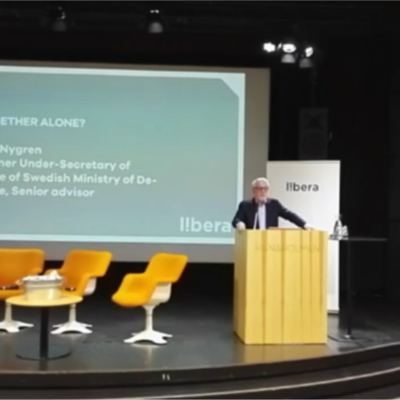You often hear the importance of wages downplayed in our country’s competitiveness. It is said that its significance is marginal, and less than ten percent of revenue. This is indeed true, for example, in the large units of forest industry. But when taking into account the indirect employee costs and labor-intensive small firms, the share increases to 13 – 15 percent (13.3% in 2012).
A product is however not made in a single company, but is nowadays the result of a highly refined distribution of work. For example, a cardboard milk carton is a result of a long value-added chain starting from forest management, wood harvesting and storage, and ending in the pulp mill and paper mill. Transport and storage will be involved in every stage. In addition, a countless number of services, energy products, additives etc. enter from the side before the actual production.
Added value and labor costs occur at all stages. Thus, they add up to and often go up to 60-80 per cent of the net price of the product.
Wages and social security contributions accounted in 2012-13 a total of about 100 billion euros (net national statistics). Dividends paid by companies amounted to EUR 3.3 billion, or just over three per cent of salary compensation of employees in 2012 (Taxable income in 2012, Statistics Finland). In addition, the same amount of undistributed earnings are usually left in the companies. Then the ratio of profits to compensation of employees would be 6-7%.
Others than just companies also pay wages, but the above mentioned describes the proportion of profits in a national revenue distribution. In industry analyses, the profits are usually from a tenth to a quarter with respect to compensation of employees. Small changes in the amount of profits are reflected as large changes in the propensity to invest and economic growth.
In recent years, corporate profitability and capital returns have been meager. Dividends have however been shared as profitable investment opportunities have not been found. In addition, there has been either no money or willingness for product development.
Confidence in the future has been weak. There has often been considerations of transfer of production to countries with lower labor costs and sometimes this has indeed happened. Finnish wage and salary earners are pricing themselves out of the market as labor productivity falls. Despite the increase in the services sector, manufacturing sector is still the backbone of the Finnish economy.
According to calculations by Statistics Finland, the share of personnel costs of the added value in the manufacturing sector was 73 percent in 2012. It rose by 7%-points from the previous year. All the machinery, equipment, buildings, rents, interests, taxes and, if there is anything left, the dividends, must be paid from the remaining 27 per cent. Industry personnel costs amounted to just over €17 billion, while the dividends were only slightly more than €3 billion in all companies.
A decade ago, the electronics industry was the most important export sector with about a quarter of exports. Even in 2007, the operating margin stood at a whopping 14%. Since then, the trend has been in an almost continuous collapse. In 2012, the industry’s operating margin was 4% in the red. The operating margin should be able to pay for equipment and buildings, interest, taxes, rents and dividends!
Also the decline in metal products has been almost as fierce. The division’s operating margin amounted in 2012 to about two per cent, compared to 18% in 2006. In these areas the possibility to make major investments is slim. Chemical and food industries fared a little better.
The entire manufacturing sector operating revenue has decreased from the turn of the millenium’s 14% to a third of about 4% in 2012. At the same time staff costs have risen, and (especially in recent years) faster than in other EU countries. The decline in operating revenue and earnings has, unfortunately, been a trend since the turn of the millennium and not just due to a cycle in economy. The pit in the cycle occurred around the end of 2009. Since then, there has been a return to the old declining trend.
In industry, there are still a few very successful companies. However, the majority of the swim so deep that no major investments are to be expected, not to mention growth. Expecting a rise in the international economic situation is wishful thinking. Even if such a rise did occur, it would be unlikely to be sufficient to turn the trend. It would require the allocation of the proportion of labor and capital to the benefit of capital.
Improving purchasing power by undermining the profitability of companies will have the opposite effect. It will only improve the competitiveness of foreign tourism and import business. To maintain their profitability, the domestic companies should then raise their prices. That would however not always be successful, since the import prices may not follow. The domestic companies would then have to cut down on unprofitable products and lay off workers in order to survive.
In the millennium glory days of the Finnish industry, the standard of living rose so high that the only way has been down. Companies can not take this from their capital, because they will diminish quickly.
When wages are not taking a serious part in the sharing of the decline of results, capital will be subject to a significantly more severe pressure. This is especially true when the share of profits in income distribution is only a fraction of the wage share. The way in which companies can try to at least somehow survive this is to reduce personnel costs by laying off people. The only alternative left would be bankruptcy. Both options will lead to an increase in unemployment and worse social consequences.
Blogs





